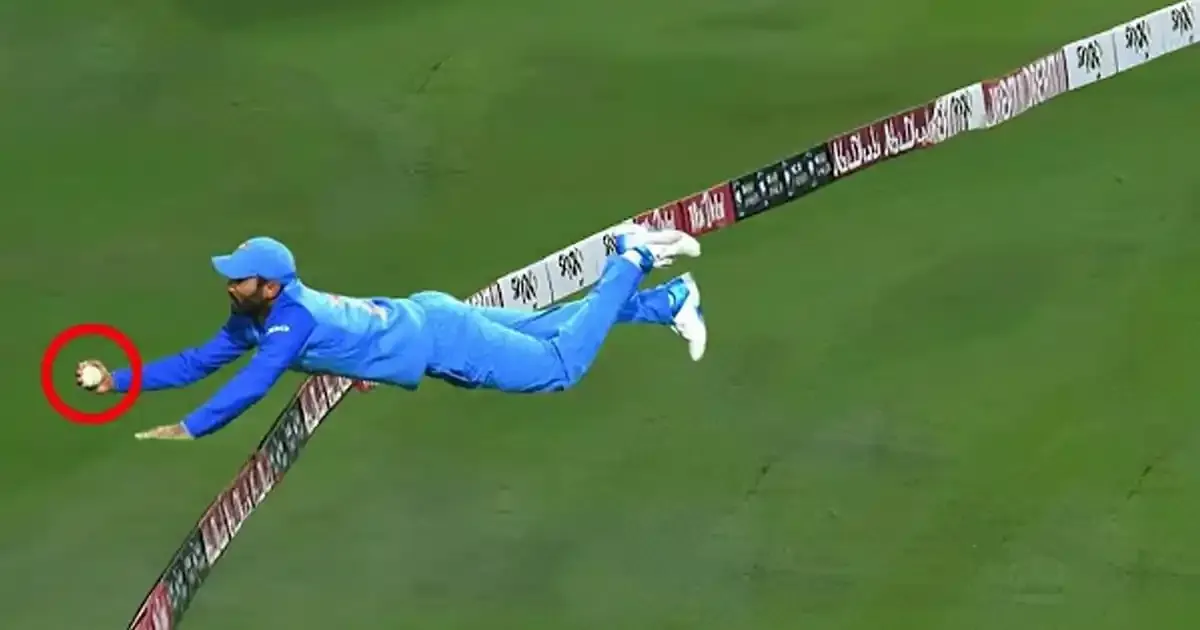
Credit: X
The International Cricket Council (ICC) has come up with reforms regarding the rules of boundary line catching. The regulation stresses on the grabs with action taking place outside the boundary area. Cricket’s apex body wrote to the Marylebone Cricket Club (MCC) to review catches sealed with multiple jumps and multiple airborne contacts with the ball before the catch is completed inside the boundary line. The moderations will take place next year but the other changes to the playing conditions will be applied from this month.
The new amendments recommended by ICC to MCC are as follows:
1. In any instance, if a fielder is in contact with the ball and the ground, he/she must be entirely inside the boundary. This is stated in Law 19.5.1, and has not reformed at all.
2. If a fielder's first touch of the ball is while off the surface, they must have been inside the boundary before they left the ground to make that touch. This is included by 19.5.2, and has also not been amended. It means a fielder can never wait for the ball outside the boundary line, jump up and fend off the ball back into play.
3. Where more than one fielder is associated in a grab, points 1 and 2 are bound to be imposed on each and every fielder. Each fielder's first touch of the ball must happen while they are inside, or having taken off from inside, the boundary.
4. Under the new law, a fielder must be inside the boundary line before they first touch the ball and, if they then touch the ball in the air having been landed outside the boundary, must next be inside the boundary. They cannot make multiple touches of the ball outside the boundary area. Once the fielder has grounded any part of their body over the boundary, the next time they touch the ball they must land completely inside the boundary, and all of their contact with the ground after this point must be within the boundary line.
5. If a fielder is engaged in a relay catch, where they parry the ball back inside to their teammate, the fielder who touches the ball outside the boundary line must be wholly inside even if they don't subsequently touch the ball. This alludes that the fielder who parries the ball back would be required to land wholly within the boundary area.
6. If a player jumps from beyond the boundary and parries the ball back inside the boundary, but the fielder finds himself outside the boundary, then the ball is to be considered grounded outside the boundary - even if the ball were to land back inside - because the fielder has not met the conditions of landing back inside the boundary.
7. Once the fielder has leaped from outside the boundary and touched the ball while flying, the limit on them going over the boundary applies for the entirety of the rest of the ball. So a fielder cannot jump from outside the boundary, grab the ball, land inside the boundary, and then throw the ball again (if they are losing their balance) and land outside the boundary domain again. The fielder will get one go, and one go only, at being outside the boundary.
What does the new law state?
19.5.2 - A fielder who is not in touch with the surface is considered to be grounded beyond the boundary if, ahead of their first contact with the ball, their final contact with the ground was not entirely within the boundary area. This is imposed on any player who makes contact with the ball after it has been delivered by the bowler, whether or not the ball has previously been in contact with another fielder.
19.5.2.1 - If a fielder's maiden contact with the ball does not violate 19.5.2, that fielder may then leap from outside the boundary area with the objective to make contact with the ball whilst flying. After making contact with the ball once airborne, all subsequent contact with the surface by that fielder, until the ball becomes dead, must be within the field of play. Any ensuing contact with the ground outside the boundary by that fielder during that delivery, whether or not in contact with the ball, will be declared in a boundary being scored.
19.5.2.2 - If the ball is returned to the playing area, whether to another fielder or onto the surface, by a fielder who has jumped from outside the boundary, that fielder must land, and remain, within the boundary line until the ball is declared dead. Otherwise a boundary shall be scored.




